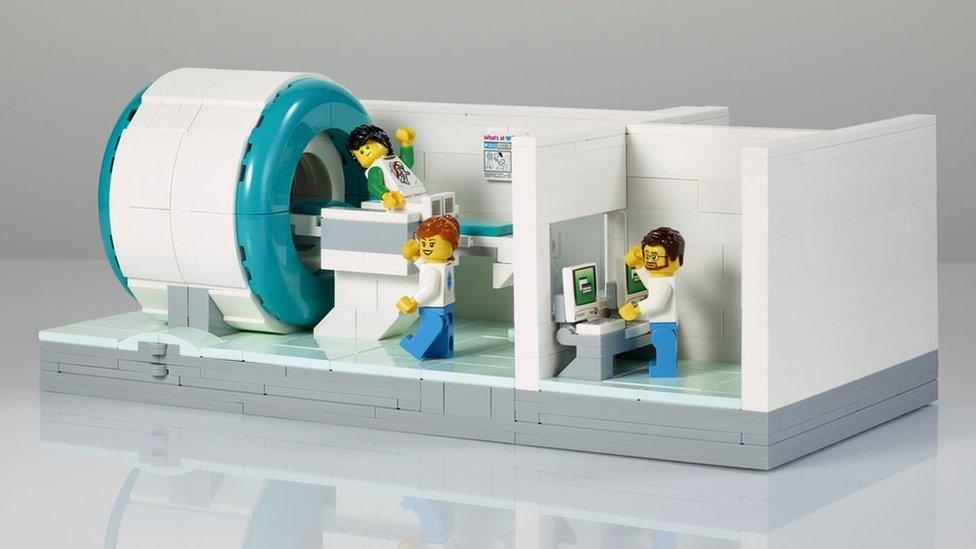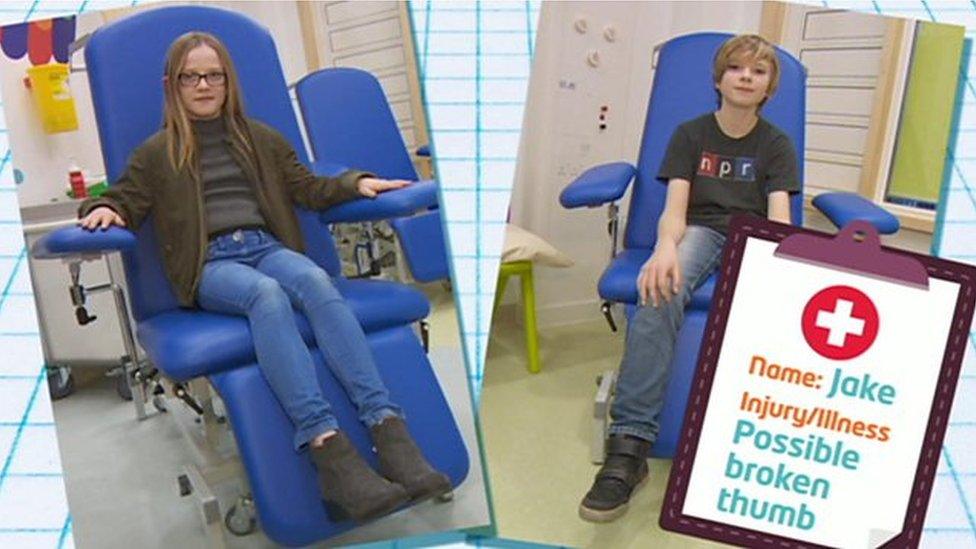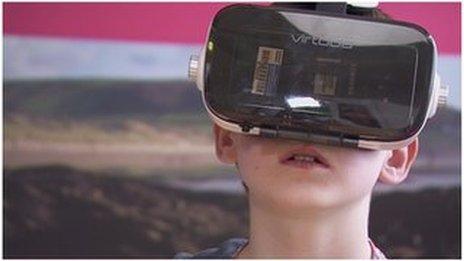Lego: MRI toys donated to hospitals to help kids feel less nervous
- Published
- comments

Lego hope the toys can help kids to feel less nervous before having an MRI scan
The Lego Foundation - part of the Lego company that does charity work - has announced that it will donate 600 new MRI scanner toys to hospitals.
MRI stands for magnetic resonance imaging, and is a special way of taking a picture of the inside of your body using powerful magnets and radio waves.
MRI scanners are big tubes that can be found in hospitals, and doctors use the pictures taken by the scanners to find out if a person has any problems in their bones, blood vessels, heart or brain.
Although they aren't dangerous, some people find the scanners quite scary - they are very loud and some people don't like being in very small spaces.
Lego hope their scanner toys will help children feel less nervous about the machines.

LEGO employee Erik Ullerlund Staehr and Odense University Hospital in Denmark, first came up with the idea for the MRI scanner toy in 2015, and now it is being sent to children's hospitals all over the world.
They hope that by seeing a toy version of the machine and learning about how it works before having a scan, it will be less scary for children.
"MRI Scanners are huge machines. They also make a lot of noise which can be very daunting for children," said Ulla Jensen from the Department of Radiology at Odense University Hospital in Denmark.
"Our team have found that use of models such as the LEGO model has led to more positive, calm experiences for many children. This benefits the child, their family and also the quality of the MRI scan, which relies on the person being very still for up to an hour to work," they said.
Take a look at an MRI scan in action, and how doctors are using VR to help
In 2020/21 around 120,000 children in the UK, aged from 0-14, needed to have an MRI scan.
Tracey Martin, a child health specialist at Leeds Children's Hospital, says: 'It's difficult to explain to children what's going to happen in an MRI appointment. But they can play with the Lego scanner and pretend they are the patient. Then, when it comes to the real thing, it's less scary.'
Other doctors around the world have invented other ways to make the scanner seem a bit less scary, for example using VR technology.
- Published10 February 2017

- Published16 February 2017

